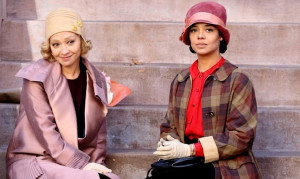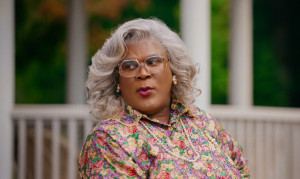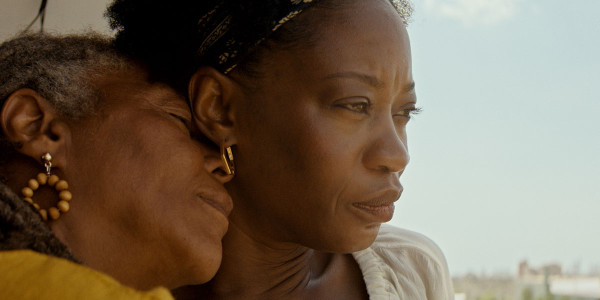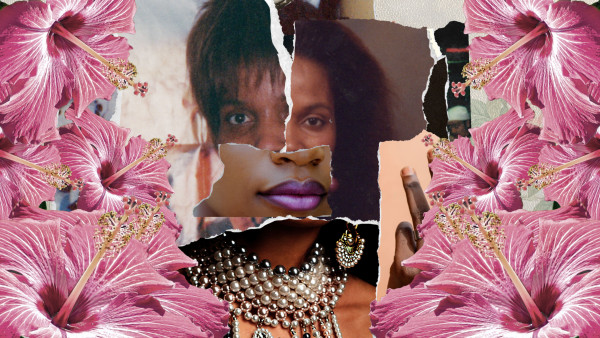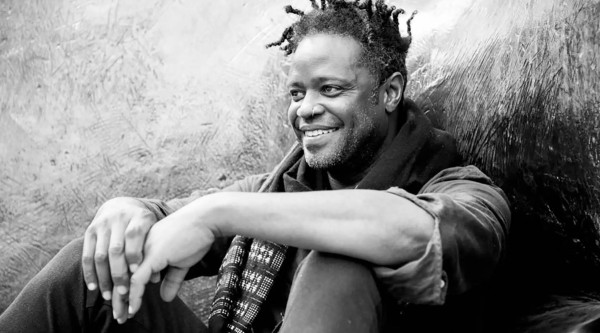Holness and Sutherland met at York University. Sutherland graduated with a degree in film and was clear on his direction from the onset. But Holness, who graduated with a degree in policy analysis, began her voyage in the film industry initially as a producer of Sutherland’s works.
Accolades came immediately. Their first film together, My Father’s Hands, won the HBO Award for Best Short Film. Then, the dramatic series GUNS won multiple Gemini Awards. And the feature film Love, Sex & Eating the Bones was awarded the Best Canadian Feature at Toronto International Film Festival (TIFF) in the Perspective Canada program. The list of work and awards are extensive and includes a slew of acting honours for their carefully chosen casts.
With a cornucopia of awards for their work, I wondered which ones were most meaningful to them. Holness explains that as she began working in more creative capacities, story editing, writing and soon directing, she experienced challenges. It was hard to gain acceptance within the industry as a Black woman and someone who could easily straddle both the producing and creative worlds with ease. In 2021, she received the Women in Film and Television (WIFT) Creative Excellence Award that acknowledges her creative work.
Awards from the Black community also rate very high on the duo’s list. “When it's the community who likes your work, it has touched us or impacted us, or you bring something important to the table, those are the awards that mean the most to me,” says Holness. Their 2021 documentary Subjects of Desire, for example, in addition to winning the Top 10 Audience Award at Hot Docs Canadian International Documentary Festival; Canada’s Top 10 Films 2021 at TIFF; also received the Best Documentary—DC Black Film Festival; Best Documentary, San Francisco Black Film Festival; and Best Documentary, CineFAM Film Festival (Women of Colour Creators, Canada).
History 101
Black history in Canada is often told from an American perspective. “Most Canadians and even Black Canadians don't even know the last name of, you know, some of our freedom fighters of which we've had a number,” says Holness. Sutherland also notes that many Canadians don’t know about the prevalence of slavery in our country. “I literally went out and did some drone footage with like all of the streets that have slave master's names.” He lists Russell Hill Road, Baby Point, and Jarvis Street in Toronto, Ontario. These are familiar names with hidden and horrendous associations. Hungry Eyes Media also created black and white historical footage and photographs, as poignantly, little existed. At the time, no one thought these moments or people were worthy of documentation.
BLK—An Origin Story, the new 4-part documentary series, is helping to flip that narrative of historical omissions. It brings together some of Canada’s best literary minds, academics, cultural experts, and musicians in a feast for the eyes, ears, mind, and heart. We hear from Dr. Charmaine Nelson, Chair of the Institute of Study of Canadian Slavery; Natasha Henry, President of the Ontario Black History Society; and Dr. Isaac Saney, a specialist in African, Caribbean, and Cuban studies, as well as literary giants George Elliot Clarke and Lawrence Hill. They focused on Nova Scotia, Ontario, British Columbia, and Quebec, each with a compelling historical narrative missing from the mainstream.
{https://youtu.be/lAVuMRYGz8U}
Three Epic Migrations, One People (Part 1), directed by Holness, features the three significant migrations to Nova Scotia, the seat of Canada’s most prominent Black population. Holness, Sutherland, and the team spoke with descendants of the Black Loyalists, the Jamaican Maroons, and Black Refugees of the 1800s who fled America. They also feature the deep connections with Indigenous nations and the many people of mixed African and Indigenous descent.
The Ontario segment, directed by Sutherland, focuses on the life of John "Daddy" Hall of Owen Sound. Hall, the child of an Ojibwe father and an escaped-slave mother in Upper Canada, lived as a free man until he was captured and sold into slavery in the U.S. Thirteen years later, Hall escaped enslavement and made his way back to Canada.
The British Columbia segment is co-directed by Holness and Sutherland. “There was something compelling about the story of Hogan’s Alley, the heart of Vancouver’s Black community,” says Sutherland. The community was destroyed when the city sought to construct a freeway.
The final segment, directed by Maya Aniik Bedward, is set in Quebec. Little Burgundy was a Black community in Montreal. Many men worked as sleeping car porters on Canada’s railway system, one of the few good jobs available to Black men. In addition to bringing information and culture from one end of the country to the other, the community of porters organized North America’s first Black trade union. Montreal is also the home of Oscar Peterson and has a great jazz tradition. The segment features an interview with the great jazz pianist Oliver Jones.
Unfortunately, much had to be left out. There are other pockets of Black populations. For example, Black Alberta and Black Nunavut have been and still are significant long-standing Black populations. In preparing for this interview and article, I unexpectedly noted a photo of my father, flight surgeon Dr. Stephen Blizzard, in the opening credits, along with many other Black Canadians. “This time, we went for the most overt stories,” says Sutherland. Hungry Eyes Media hopes to be back with more historical tales and links to other accounts and resources on their website.
With hidden stories bought forward from across Canada, their links to the rest of the globe and sumptuous cinematography, this quartet of films is engaging and entertaining. It is also enraging: this series highlights how little about Black history we learn from our schools and institutions.
Beyond Black History Month
The opportunity to create such an important project did not come easily. Holness explains: “The gatekeepers who commission these stories weren't really willing to engage fully until the murder of George Floyd.” She notes that with the recognized murder of Black men and women it became possible to talk more openly about systemic and structural racism within many spheres of Canadian culture and institutions. “It's freed up some money.”
The first offers were for a project of limited scope, with half-hour slots aired during Black History Month. “Half hours are what is usually given to junior filmmakers,” says Sutherland. They were eventually commissioned to create the documentary series by the History Channel in November 2020 and began filming in July 2021.
They also ensured that the project was not aired only during Black History Month. “The premier is at the end of Black History Month, but the other three episodes are in March. So that's great. That's breaking new ground for Canada,” says Holness.
Building community, creating capacity
The duo has always been committed to mentorship. “We have interns in our office; always, we always have people come in and shadow our work, shadow us.”
This extends to bringing in new people to the set. For example, Holness spotted cinematographer, Ashley Iris Gill’s work on commercials and thought she might be a good fit for the project. “I really feel like it's important to give women opportunities and by that, I mean Black women. She was our second camera with our Director of Photography, Ricardo Diaz, and they both did just beautiful work!”
On some level, commitment to mentorship counters an issue in the Black community. We are not a monolithic group. We come with a multitude of histories and often divisions. We do not always support each other.
“I do think though it comes from colonialism and some of the ways in which Black folks have been socialized…in terms of how we deal with each other, how we deal with ourselves,” says Sutherland.
“It’s a bit like the crabs in a barrel mentality,” adds Holness. Resources are limited, so grab what you can to survive.
The series seeks to contribute to disrupt this narrative of disconnection.
“Lawrence Hill said, in the Ontario piece, that these histories, Black folks in Canada, Black folks in America, Black folks in the U.K., Black folks in the Caribbean, South America, Africa, they're not discreet histories. They're people who are moving around all the time. They're all intertwined. We're all connected. This work seeks to show how we are all connected,” says Sutherland. “We call this process ‘cousining’,” he laughs.
Charting new ways
For Canadians in general and Black Canadians specifically, BLK—An Origin Story is a welcome reset of the dialogue about our collective histories, our current work and the legacies that we will leave for the future.
“People, especially young people, need to know that they do have a place here, that they did have a hand in building this country, and they do have a hand in making this country a better place.” So Hungry Eyes Media is also developing an educational materials package that can be used in schools as part of the regular curriculum—all year long.
With such extensive, consistent, and visionary work over a long period, I felt it appropriate to ask for some advice for the rest of us.
“You have to have a plan. You must be systematic about the plan. We look at things, and we strive for excellence,” says Holness. In terms of sorting out how to work on both business and creative endeavours while raising three children together, Sutherland laughs, “the best idea wins.”
BLK—An Origin Story airs on the History Canada channel on February 26, 2022, and on Global TV a week later.
This story is part of our 10-part series, "Black History Month Changemakers."
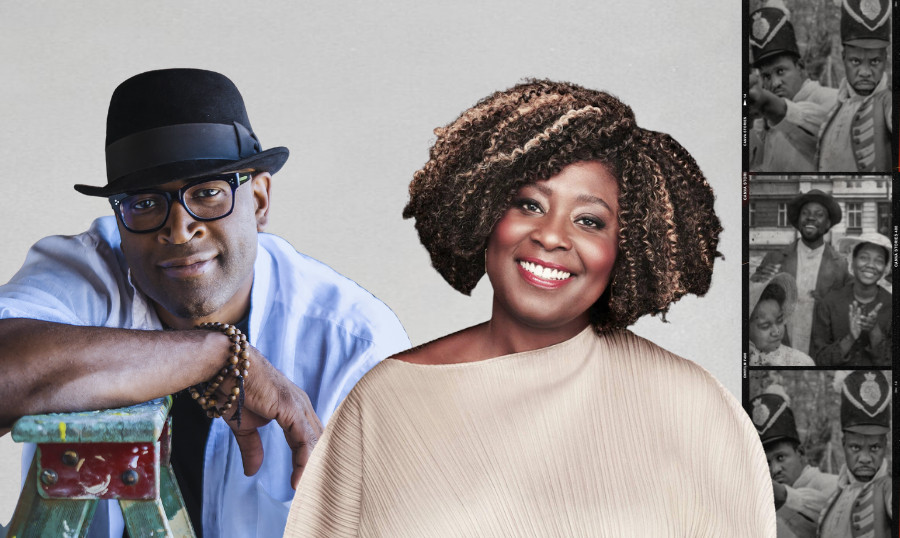
 By
By 




